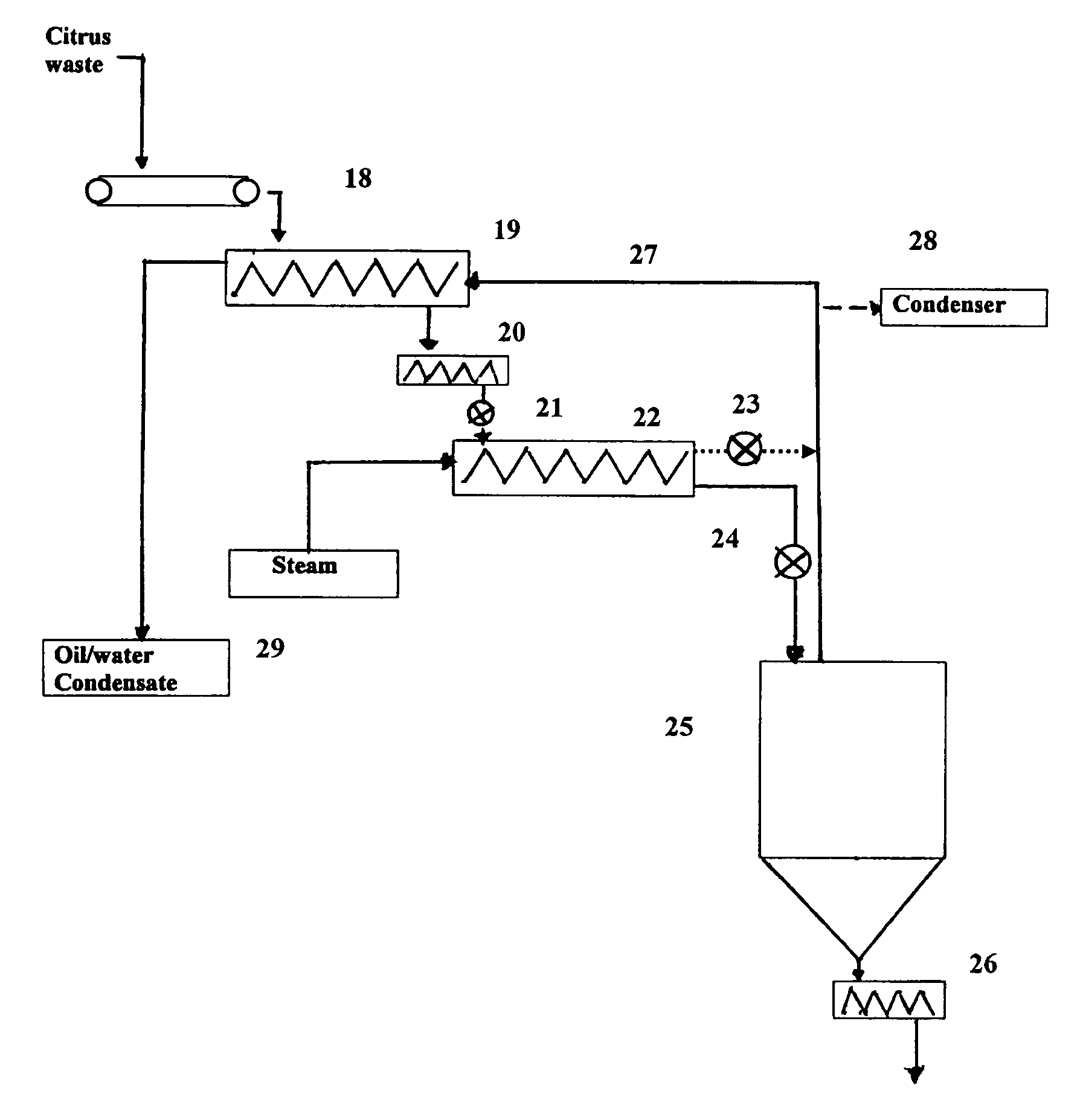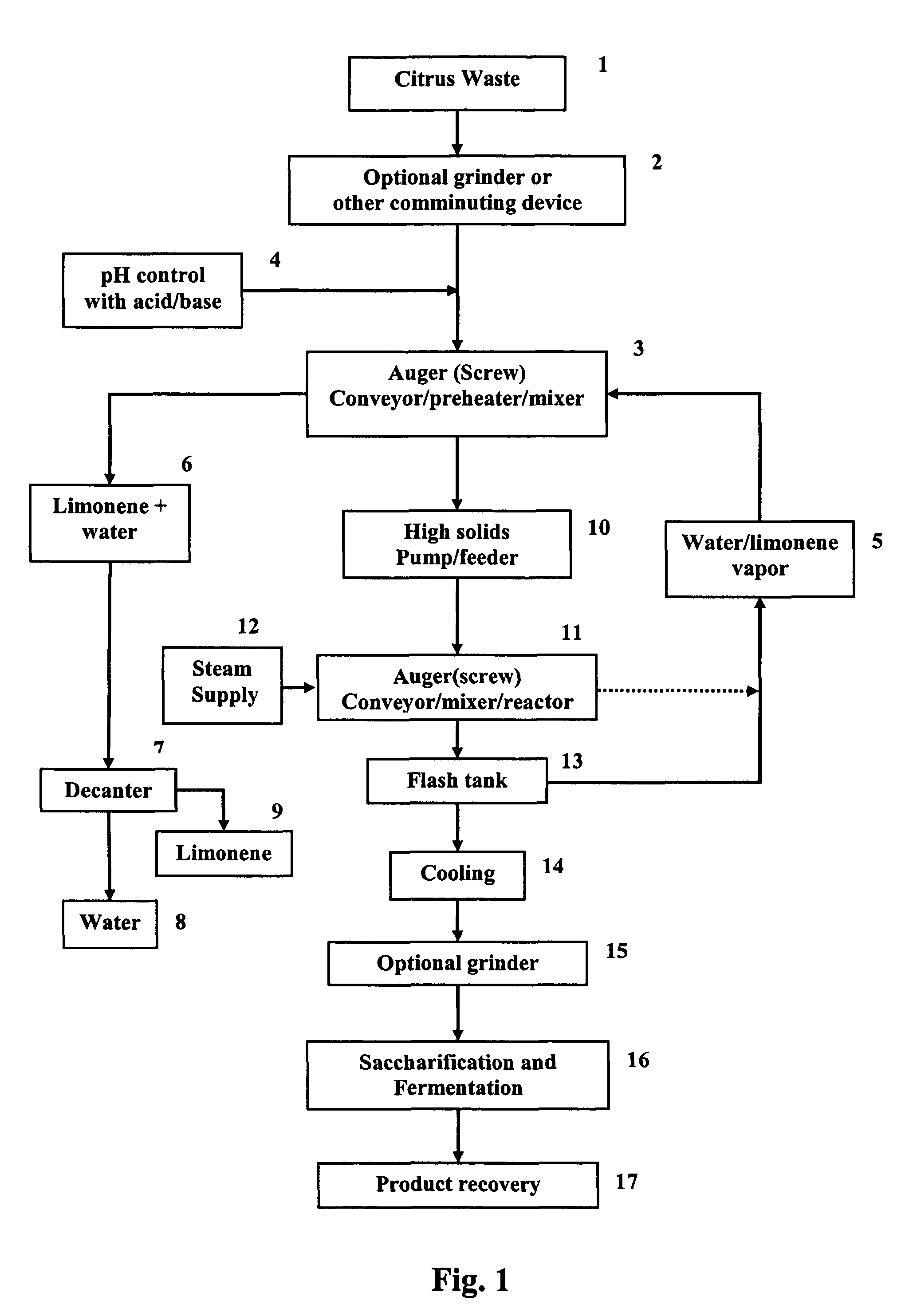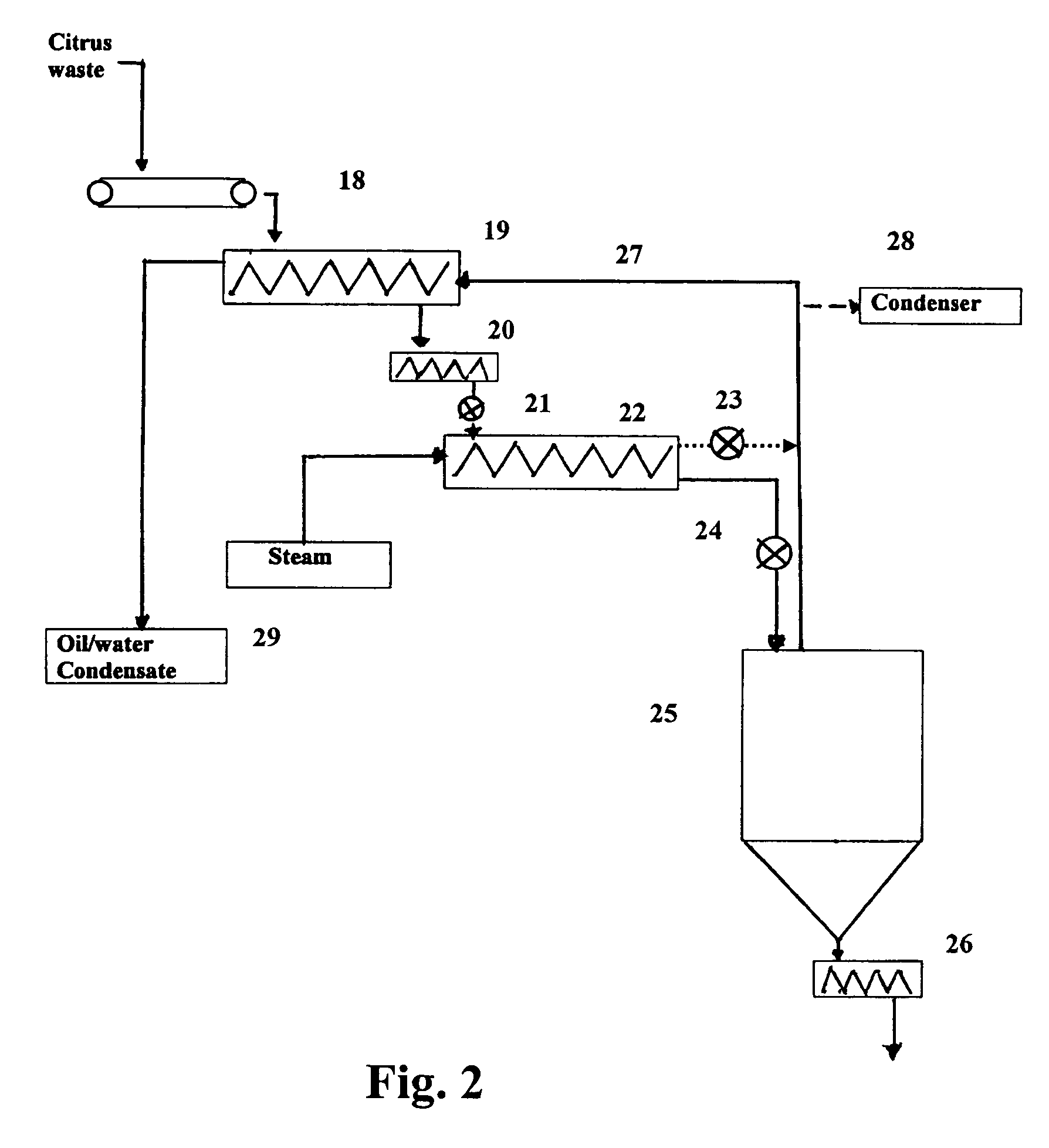Method of pretreating citrus waste
- Summary
- Abstract
- Description
- Claims
- Application Information
AI Technical Summary
Benefits of technology
Problems solved by technology
Method used
Image
Examples
Embodiment Construction
[0026]For purposes of describing the preferred embodiment, the terminology used in reference to the numbered components in the drawings is as follows:[0027]1. Citrus waste mixture[0028]2. Optional grinder, shredder or similar device[0029]3. Jacketed auger conveyor / pre-heater / mixer / reactor[0030]4. pH control with acid or base[0031]5. Water / peel oil vapors, including limonene[0032]6. Water / peel oil condensate, including limonene[0033]7. Decanter[0034]8. Water (bottom) layer[0035]9. Peel oil layer, including limonene[0036]10. High solids pump, auger or similar pressure feeder[0037]11. Jacketed, auger conveyor / mixer / main reactor equipped with steam injection[0038]12. Steam supply[0039]13. Flash tank[0040]14. Cooling system[0041]15. Optional grinder, shredder or similar device[0042]16. Saccharification and fermentation system[0043]17. Product recovery system[0044]18. Belt conveyor[0045]19. Jacketed, auger conveyor / mixer with hollow shaft and hollow flights[0046]20. Screw feeder, progress...
PUM
| Property | Measurement | Unit |
|---|---|---|
| Temperature | aaaaa | aaaaa |
| Temperature | aaaaa | aaaaa |
| Temperature | aaaaa | aaaaa |
Abstract
Description
Claims
Application Information
 Login to View More
Login to View More - R&D
- Intellectual Property
- Life Sciences
- Materials
- Tech Scout
- Unparalleled Data Quality
- Higher Quality Content
- 60% Fewer Hallucinations
Browse by: Latest US Patents, China's latest patents, Technical Efficacy Thesaurus, Application Domain, Technology Topic, Popular Technical Reports.
© 2025 PatSnap. All rights reserved.Legal|Privacy policy|Modern Slavery Act Transparency Statement|Sitemap|About US| Contact US: help@patsnap.com



